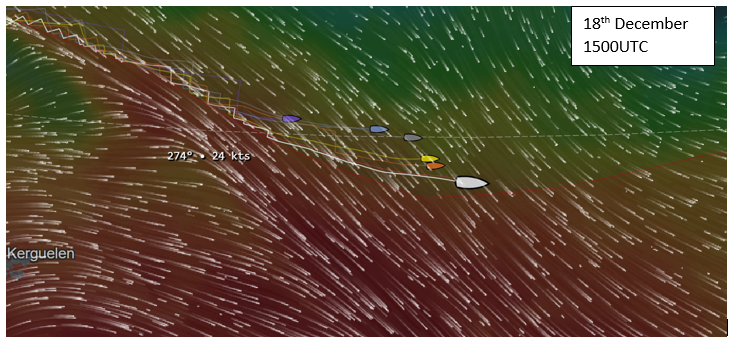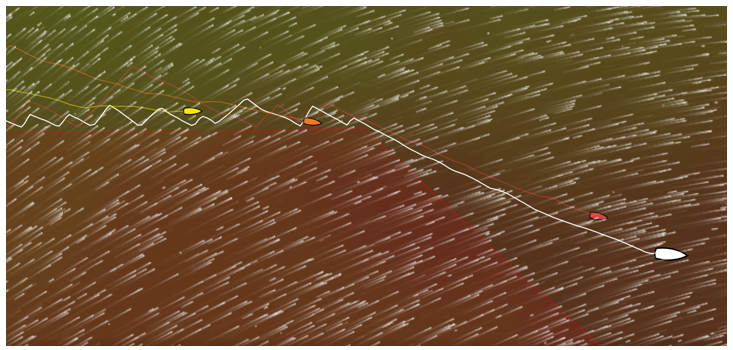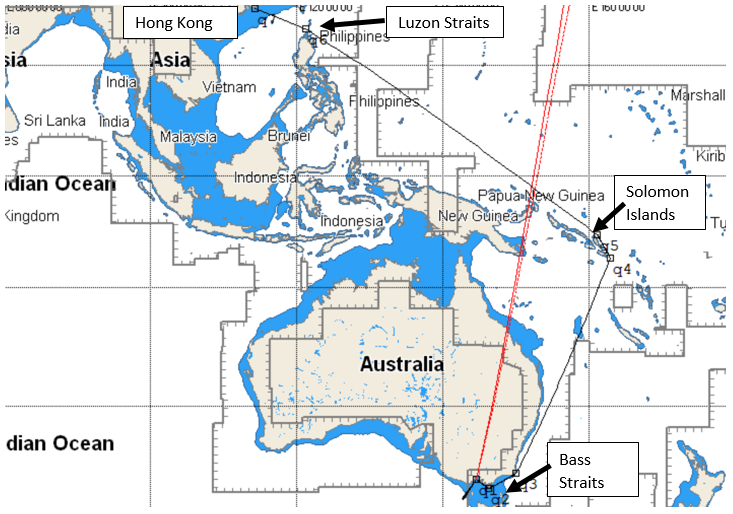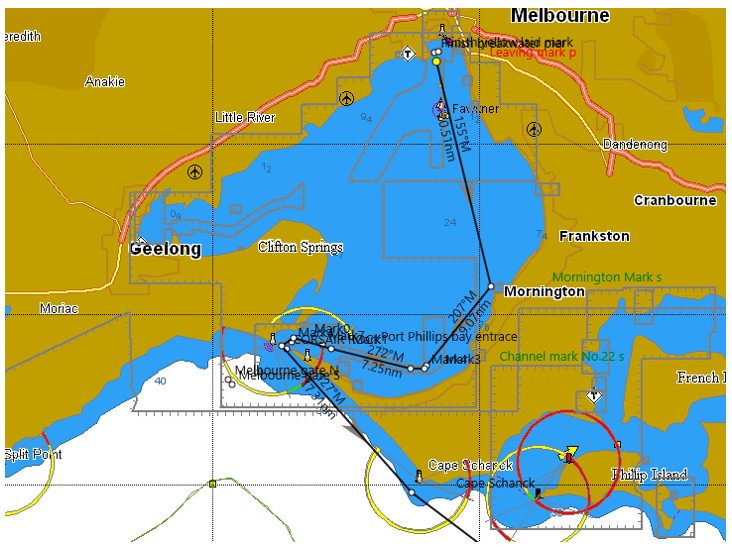Quick wrap up and off we go!
The words relentless and broken are being used by many of the Volvo Ocean Race sailors after a punishing third leg as we see an unprecedented number of crew changes in the teams, some planned and a fair few due to injury.
The Southern Ocean took a few scalps and the 6-8 days ashore for teams has hardly been enough to recover, replace, renew or fix boats.
The teams have been pretty much able to get their boats back up to 100%, though Scallywag, who lost their J0 overboard on the last leg (sorry ocean!) have been unable to get their replacement as it is currently in a container on its merry way to Auckland. The logistical side of the Volvo Ocean Race and planning the movement of equipment and leapfrogging gear to different stopovers means it is hard to cater for all eventualities. Instead the team will be taking a replacement 80kg bag that they stack on deck like a sail…….we’re going to love stacking that one!
So what happened in the those final few days? We last caught up with the boats short-gybing along the ice zone to stay in better pressure and shifts and waiting for a frontal system to pass over the fleet.
Front approaching
As the frontal system chased the fleet from behind there was notable compression and what looked like the opportunity for the bulk of the fleet to try and attack the frontrunning Dongfeng and Mapfre who continued to duel it out.
But ultimately as the front catches the back of the fleet first it also overruns them first and in this case had a much bigger effect on the final 3 teams, establishing a fairly solid and significant split in the fleet.
Gybe off
The next big move came from Mapfre who had been pushing Dongfeng all the way on this leg and then committed to 14 gybes in 25-35KT to stay in better pressure and shift along the ice zone and take lead form Dongfeng.
I don’t think anyone can fathom what that entailed: the energy, the crew work, the shear boldness to take on such a series of manoeuvres knowing it would ultimately mean you won the leg. The risk/reward conversation would have been very interesting. How do you weigh up the risk of a gybe going wrong like with Akzonobel, who did one bad gybe and were out of the race, versus the gain you could make. This is where experience, team work and time together pays dividends.
The last hurrah
After the gybe off the race was relatively straightforward with teams just trying to work out when to gybe for Melbourne; and this gave a few opportunities for boats to close as they picked their gybe. Once again we saw a series of two boat battles begin to set up.
A phenomenally tough leg with breakages of boats and people and very little respite before they head to sea again.
Leg 4- Melbourne to Hong Kong
Another big leg distance wise but also potentially a slow leg, roughly 5800nm turning left out of Melbourne, through the Bass Straits and up the coast of Australia and towards the Solomon islands, leaving them on port and then heading to the Luzon Straits with the Philippines on port and Taiwan on starboard and then into Hong Kong.
There are 4 main features to the Leg,
- The start and SE Australia
- SE Trades
- Doldrums
- NE Trades and the Monsoon
The Course
The Start to SE Australia
Leaving Melbourne at the start isn’t easy – and not just because they have to crank the boats over to get them out under the bridge! Port Phillip Bay is large and the final channel out is pretty narrow. The latest forecast shows a SSW wind building from 12-20 KT as they head through the Bay. This will mean a predominantly upwind set off as they head south to the channel.
Local knowledge of the Bay I am sure will prove useful and a number of the teams have sailors who have done numerous regattas in the Bay: no doubt the Hong Kong/Australian Team of Scallywag will be wanting to take advantage.
Bass Straits and Cape
Once out of Port Phillip Bay the teams will hang a left and head to the Bass Straits between Australia and Tasmania and the most SE corner of Australia. The land effects on the wind are hugely significant here and much like we have seen out of Cape Town teams will be looking to work the wind bend and acceleration around Cape Howe. Getting this right could provide a little jump on the rest of the teams. This will all happen in the first 24-36 hours.
SE Australia to Solomon Island
Once round the corner, it is pretty much a 1500nm NE straight line to the Solomon islands. There are few things to consider that will slow them down.
Firstly the EAC (yes that current that turtles hang out in Finding Nemo!) East Australian Current, this is a south going current with eddies shedding of it and will play a part in the positioning of the fleet around the corner, trying to stay inshore of the south going flow and picking when to peel away and head more directly to the Solomon islands.
Secondly, the multiple reefs and small islands that the Pacific Ocean is dotted with.
A high pressure is currently setting up behind the fleet giving them a broadly southerly wind providing predominantly downwind conditions that ultimately turn easterly into the SE Trade winds.
This is where you could see the first split in the fleet as they decide whether to go offshore or inshore from here. This high pressure is chasing the fleet hard and a slow boat at this point could dropping milles even quicker as the rich get richer before they fall into the Doldrums
Doldrums
The teams this time round have yet to experience the doldrums and will get a rude reminder and awakening as they head into the doldrums in the Pacific which are highly unpredictable and changing on a daily basis. Determining to how wide and how active they will be will be challenging especially to identify the quickest way through.
When you look at the typical weather pattern, the default solution is head north.
First out of the doldrums will likely win this leg because they will settle into the NE trades and charge along to Hong Kong.
Current ETA vary between 17-20 days dependant on how large the doldrums are and how quickly the routings suggest you can get through them.
This time round I will be updating the leg strategy from onboard Team Scallywag, so come back and find out what the inside scoop is for the second half of the leg.




















